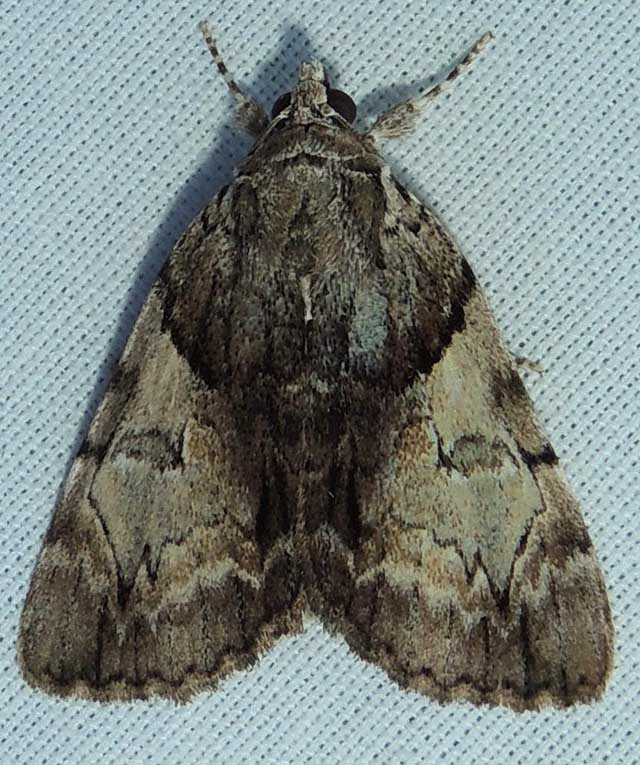Catocala lincolnana
kah-TOCK-uh-lahMLING-ken-an-uh
Brower, 1976

Catocala lincolnana Louisiana, courtesy of Vernon A. Brou.
This site has been created by
Bill Oehlke at oehlkew@islandtelecom.com
Comments, suggestions and/or additional information are welcomed by Bill.
| TAXONOMY:
Superfamily: Noctuoidea
Family: Noctuidae
Group: Noctuinina
Subfamily: Catocalinae
Genus: Catocala, Schrank, 1802
| |
MIDI MUSIC
"Moon River"
copyright C. Odenkirk
MIDI CITYON.OFF
<bgsound src="moon.mid" LOOP=FOREVER>
|
DISTRIBUTION:
The rare Lincoln Underwing, Catocala lincolnana
(wingspan: 40-50mm), flies from North Carolina (very rare) south to
Florida and west through Louisiana and
Arkansas to Texas.
I suspect it is also present in Georgia, Alabama
and Mississippi.

Catocala lincolnana, LibertyCounty, Texas,
May 4, 2015, courtesy of Stuart Marcus.
The forewings are a pale grey-brown with a distinct dark curve running
from the costa along the antemedial line to the inner margin,
advancing to the anal angle.
The inner black band of the hindwing forms a complete loop and the outer
black band is broken and followed by a dot.

Catocala lincolnana, LibertyCounty, Texas,
May 4, 2015, courtesy of Stuart Marcus.
FLIGHT TIMES AND PREFERRED FOOD PLANTS:
Catocala
lincolnana flies as a single generation with moths on the wing from May into early June.
The Catocala lincolnana caterpillar feeds on hawthorn species.
ECLOSION:
Adults eclose from pupae formed under leaf litter.
SCENTING AND MATING:
Catocala lincolnana females emit an airbourne pheromone and males use their antennae to track the scent plume.
EGGS, CATERPILLARS, COCOONS, AND PUPAE:
Eggs are deposited on tree bark in the fall and hatch the following spring.
Mature larvae Image courtesy of |
 |
Larval Food Plants
Listed below are primary food plant(s) and alternate food plants. It is hoped that this alphabetical listing followed by the common
name of the foodplant will prove useful. The list is not exhaustive, although some species seem very host specific.
Experimenting with closely related foodplants is worthwhile.
Crataegus.......
|
Hawthorn
|
This page is brought to you by Bill Oehlke and the
WLSS. Pages are on space rented from Bizland. If you would like to become a "Patron of the Sphingidae/Catocala Sites",
contact Bill.
Please send sightings/images to Bill. I will do my best to respond to requests for identification help.
Enjoy one of nature's wonderments: Live Saturniidae (Giant Silkmoth) cocoons.

|

To show appreciation for this site, click on the flashing
butterfly to the left, a link
to many worldwide insect sites. |
Return to Canadian Index
Return to Main Index




